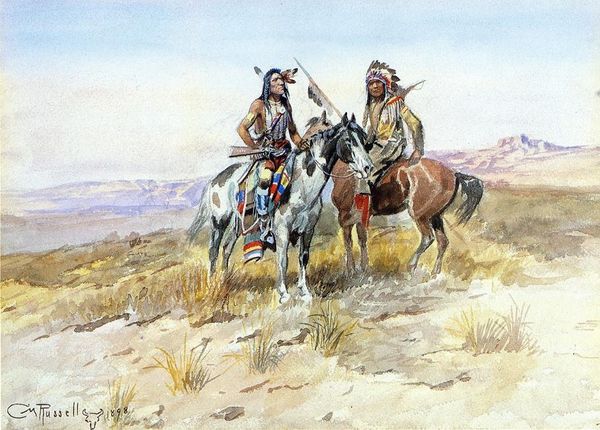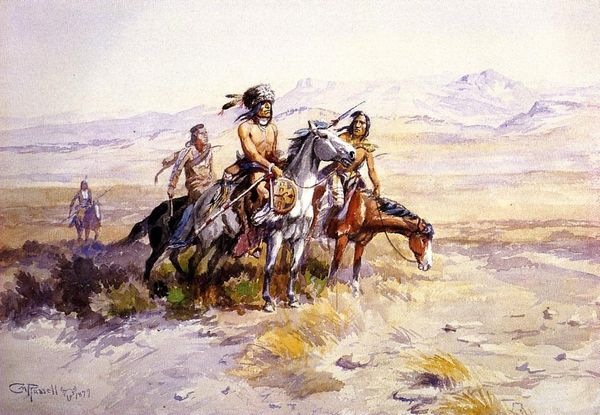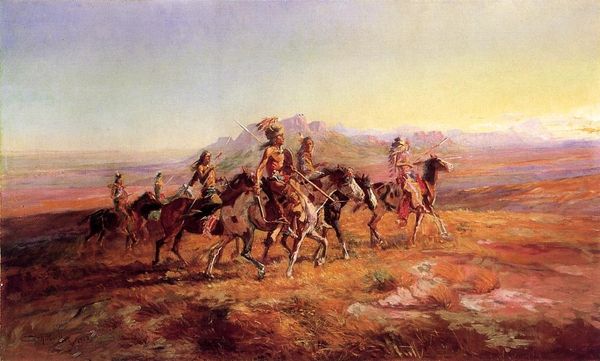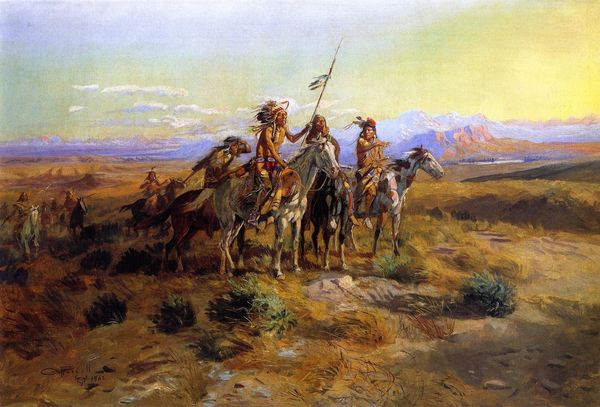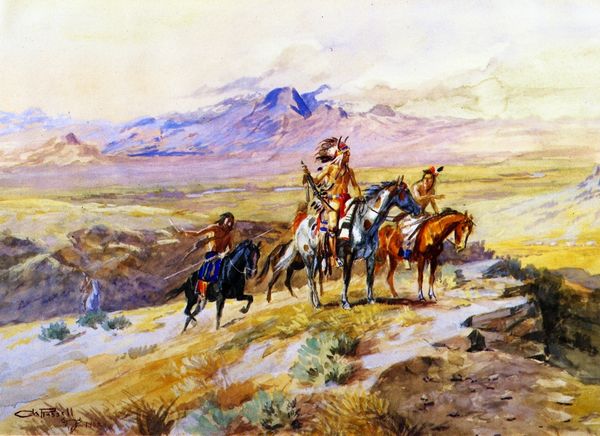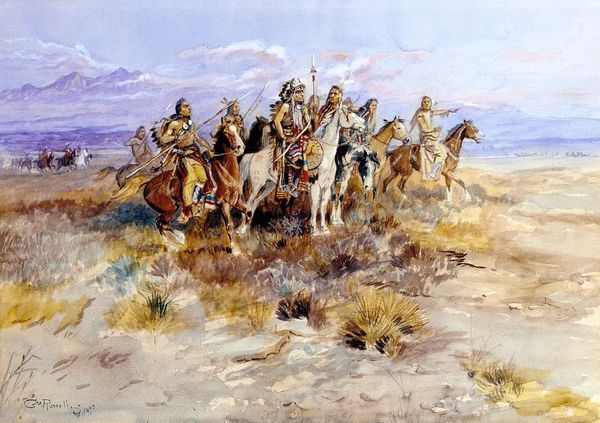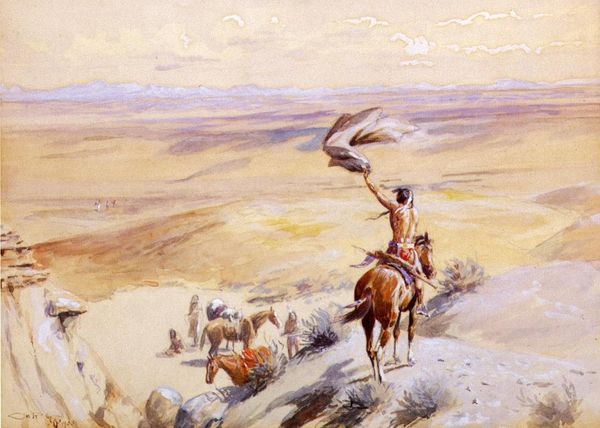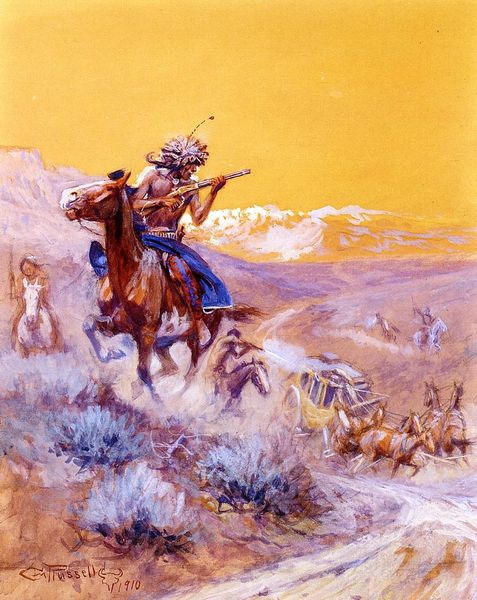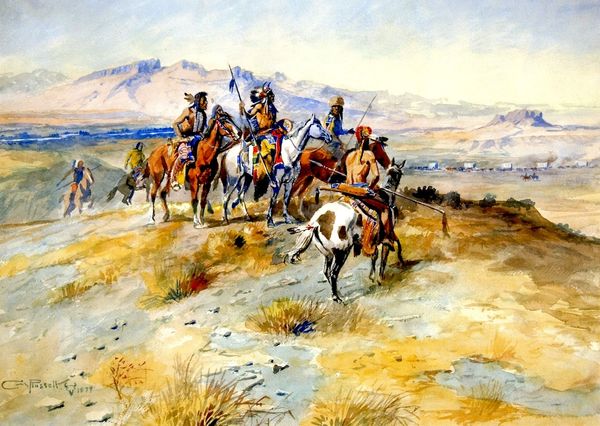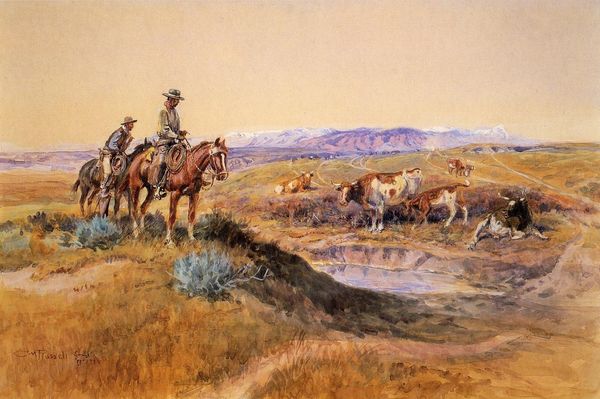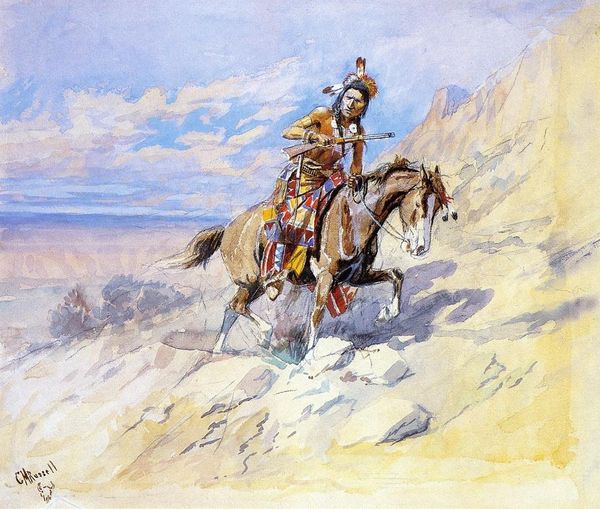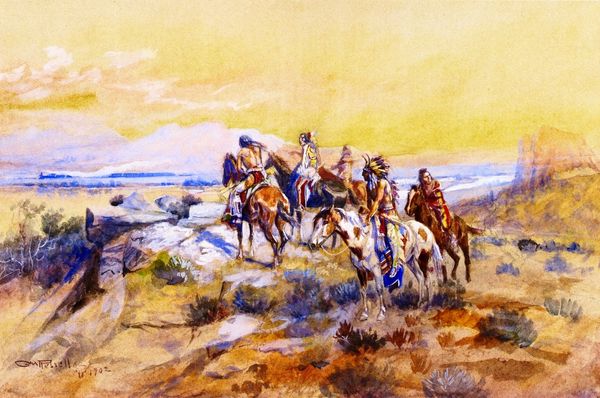
painting
#
painting
#
landscape
#
figuration
#
oil painting
#
watercolor
Copyright: Public domain
Editor: Here we have "Sighting the Enemy," a watercolor piece by Charles M. Russell. The figures on horseback emerging from the landscape feel both exposed and watchful. What are your initial thoughts on how this work portrays the encounter between Indigenous peoples and the changing American West? Curator: It's a powerful portrayal, isn’t it? Russell's romanticized depictions played a significant role in shaping popular perceptions of the American West, both celebrating and simultaneously exoticizing Native American culture. Notice how the figures blend into the landscape. How does that visual choice influence your understanding of their position in the West at this historical moment? Editor: It makes them seem like they belong, like they're part of the land. But I also wonder if it's reinforcing the stereotype of them as one with nature, separate from modern society. Curator: Exactly. It’s essential to consider how Russell's art functioned within the burgeoning market for Western-themed art. His works became valuable commodities, perpetuating specific narratives about the West and Indigenous peoples that were consumed largely by non-Native audiences. To what extent do you think that economic and social context shapes the image itself? Editor: I guess I never thought about art in the West as being bought and sold like that! It’s strange to realize it wasn't necessarily for or by the people in the painting. The commercial element makes me look at it differently now, like I'm looking through multiple lenses at once. Curator: Indeed. By recognizing the market forces at play, we gain a fuller understanding of the historical narrative this image constructs. Considering the political context, would you say Russell’s portrayal empowers or marginalizes Native American identity? Editor: I'm leaving with a much more complex understanding of "Sighting the Enemy" and its historical position. Thanks!
Comments
No comments
Be the first to comment and join the conversation on the ultimate creative platform.
